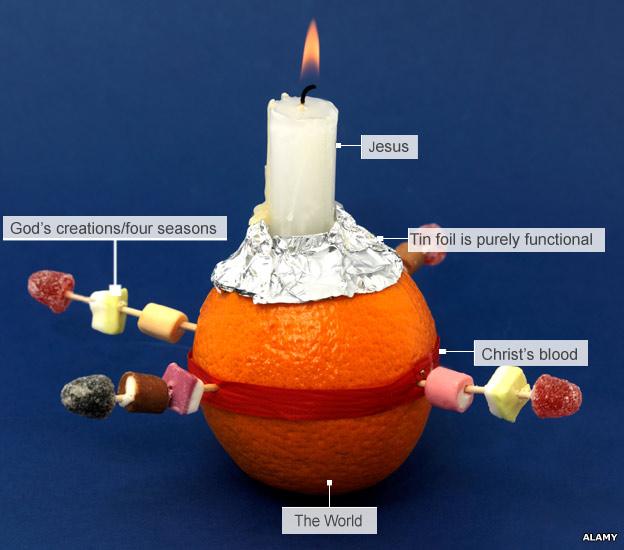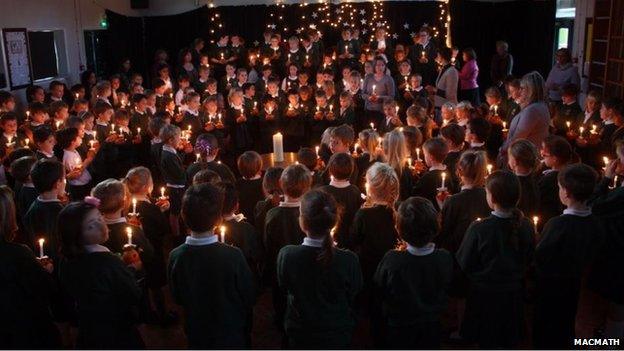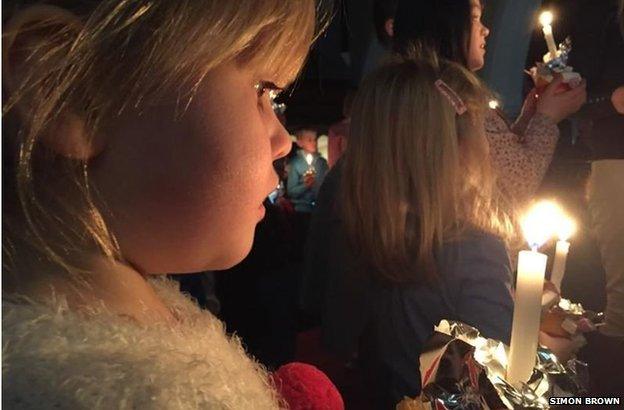Christingle: The Christmas tradition that only got going in the 1960s
- Published

What some participants say the parts of the Christingle symbolise
Many churches and schools celebrate Christmas with a candle in an orange. But where does this curious tradition come from, asks Clare Spencer.
Every year from mid-November to as late as February, many British children stick sweets on cocktail sticks, stick them in an orange, put a candle on top and gather together.
This is Christingle.
The roots of the practice lie with John de Watteville in Germany and an attempt to get children to think about Jesus. He started the tradition in 1747 in his Moravian Church congregation. At the time it was just a candle with a red ribbon given to each child. It didn't involve the orange. Or jelly tots on cocktail sticks.
But it wasn't made popular in the UK until 1968 when John Pensom, described in his Church Times obituary, external as "Mr Christingle", used it as a fundraising event for the Children's Society charity. Children would bring purses with money and receive an orange pierced with a candle in return. In 1972, the Times noted the increasing popularity of the services.
It's unclear where the orange part of the object came from. It has echoes of the scented pomander, which can be an orange studded with cloves.

Some schools have a Christingle service on the last day of term
Over 40 years later, the charity estimates more than 5,000 Christingle events were held last year to fundraise for them. But the idea has spread further than just this charity. In Northern Ireland it has been used as a way to get the different denominations together.
In fundraising terms, the Christingle is getting more popular. The money raised went up from £1m to £1.2m last year, says Children's Society's director of church and community participation Nigel Varndell.
The newest variation involves changing the candle to a glowstick. It's been prompted by the concern among some organisers that children should not be carrying lit candles. The Daily Telegraph reported back in 2006, external that Chelmsford Cathedral had gone the way of the glowstick after a particularly crammed service made them worry that children's hair could catch fire.
Candle or glowstick, it does attract bemusement.
On Christian website Ship of Fools, external, one commenter remembered their first encounter with a Christingle. It was "absolutely bizarre and utterly unlike any Christmas tradition I'd ever heard of". Even a Christian education website, Assembly Line, external, admits it looks like "a rather strange creation".

Subscribe to the BBC News Magazine's email newsletter to get articles sent to your inbox.